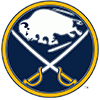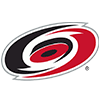With respect to standard 5x5 scoring, there's one unique category for hitting and for pitching: steals and saves, respectively. Next week we'll focus on saves. Today's episode looks at steals.
There isn't a best method to accumulate ample bags. However, understanding the different ways and choosing wisely as the draft unfolds is a key to building a competitive foundation.
Let's look at league-wide homers and steals totals from the past five years.
| Season | HR | SB |
| 2016 | 5610 | 2537 |
| 2015 | 4909 | 2505 |
| 2014 | 4186 | 2764 |
| 2013 | 4661 | 2693 |
| 2012 | 4934 | 3229 |
Some will tie the strategy of drafting steals to rising power, even incorrectly assuming that running is declining league-wide. The truth is, how to approach steals has always been an important consideration; the trend line is irrelevant. What's important is stolen bases has always been dominated by a smaller contingent of players as compared to homers. It really doesn't matter how many of each occurred the previous season or is expected the coming season. What's relevant is what follows. The numbers change yearly, but the pattern remains the same:
- The top 99 home run hitters slugged 50.3 percent of all homers
- The top 54 base stealers swiped 50.3 percent of all steals
Regardless of the actual total of each, it takes far fewer speedsters to account
With respect to standard 5x5 scoring, there's one unique category for hitting and for pitching: steals and saves, respectively. Next week we'll focus on saves. Today's episode looks at steals.
There isn't a best method to accumulate ample bags. However, understanding the different ways and choosing wisely as the draft unfolds is a key to building a competitive foundation.
Let's look at league-wide homers and steals totals from the past five years.
| Season | HR | SB |
| 2016 | 5610 | 2537 |
| 2015 | 4909 | 2505 |
| 2014 | 4186 | 2764 |
| 2013 | 4661 | 2693 |
| 2012 | 4934 | 3229 |
Some will tie the strategy of drafting steals to rising power, even incorrectly assuming that running is declining league-wide. The truth is, how to approach steals has always been an important consideration; the trend line is irrelevant. What's important is stolen bases has always been dominated by a smaller contingent of players as compared to homers. It really doesn't matter how many of each occurred the previous season or is expected the coming season. What's relevant is what follows. The numbers change yearly, but the pattern remains the same:
- The top 99 home run hitters slugged 50.3 percent of all homers
- The top 54 base stealers swiped 50.3 percent of all steals
Regardless of the actual total of each, it takes far fewer speedsters to account for half the swipes as it does sluggers to swat half the long balls. Another way of looking at it is:
- The top 50 home run hitters account for 30 percent of the total homers
- The top 50 base stealers account for 48 percent of the total steals
Either way, the composition of the pools is different. Fewer base stealers account for a larger portion of the stolen base inventory.
Here's the number of players finishing with at least 10 homers or steals last season.
| HR | SB | |
| 10 to 19 | 103 | 50 |
| 20 to 29 | 73 | 14 |
| 30 to 39 | 30 | 9 |
| 40 to 49 | 8 | 3 |
| 50-plus | 0 | 2 |
The other factor to incorporate into your thinking is the typical distribution of the steals category, as it's unique. Because there's always a few teams opting not to focus on the category at the low end, and some really high individual totals pumping up the volume in the pool at the high end, it doesn't take a lot of your assets to finish with a few points in the category, but it takes a big investment to finish in the top third of the category. The other categories aren't necessarily linear, but they're a lot closer to being so.
That sets the stage. Let's review the different approaches to acquiring steals at your draft or auction.
The first consideration may tweak a few feathers. Unless you're in a shallow mixed league, say 14 teams or fewer, you can't be strong across all 10 hitting and pitching categories in a competitive environment. If you disagree, you're not being realistic with your expectations. Ergo, the initial step is deciding what category will be your weakest coming out of the draft or auction. This doesn't mean you won't improve the category in-season, but it does guide how your team is constructed on Opening Day.
I know what some of you are thinking, "Zola's full of it. I can easily address power and speed, and everything else, by focusing on players that contribute to both categories."
No, you can't.
- 45 hitters amassed at least 10 homers and 10 steals
- 9 hitters amassed at least 20 of each
- 5 hitters hit 30 homers or more and stole at least 10 bases
- 4 hitters stole 30 or more bases and hit at least 20 homers
Sorry friends, there just aren't enough players available to build an across-the-board strong offense without sacrificing something. You've got at least 14 other combatants picking from the same available talent in mixed leagues. There just aren't sufficient players to regularly choose those that do both.
The sticking point is that the league champion usually ends up strong across the board. The way to address this is designing a strategy where the weak link gets better over the course of the season. Perhaps you accomplish this by taking some upside shots late or on reserve. Maybe that's the focus on waivers and/or in free agency. In trading leagues, you can find a compatible dance partner to strengthen the weak category.
Realistically, there's three areas to fade and still leave the draft with bountiful steals and homers: batting average, starting pitching, or saves. Runs and RBI correlate too closely with homers, so they're not a practical choice.
Let's start with batting average. A popular strategy is acquiring a few high batting average hitters to absorb those with lower averages but high counting stats later in the draft or auction. On paper, this makes sense, and it works. The problem is, at least on paper, your counting stats lag those that sacrificed average to focus on power and speed. Yeah, you can make up some of the difference since these low average players come at a discount, but again, we're all choosing from the same fixed pool and there's only so much to go around.
Batting average is unique in that it's the most tightly bunched category. Granted, each team has a different number of at-bats, but for this example, pretend they're all equal. We're now dealing with a counting category with hits being the measured stat. Think of how closely the teams are now bunched with respect to how many hits are needed to move up, as compared to how many homers, steals, runs or RBI. This is integral to formulating a strategy. If it doesn't take much to gain points, it doesn't take much to lose points either. Since the adjacent teams are so close, you don't just lose points, you lose a lot of points. All it takes is one hitter to be snake bit with their BABIP (batting average on balls in play) and your average is poisoned. On the other hand, if you shoot for a lower average, one player with Lady Luck on your side can thrust you up the standings.
So, that's one way to design a viable plan. Pound away at power and speed without being overly concerned with batting average. Maybe include a player or two with some BABIP upside from a hard hit or line drive rate that portends a higher BABIP than they recorded in the past. This addresses the potential in-season improvement of the category.
Before moving onto pitching, the exception to the above is Jose Altuve. I'm not campaigning to make Altuve the top pick, but his average is in another stratosphere with all those at-bats. However, he isn't without risk. The diminutive second sacker's steals were way down after the break last season. It may have been circumstantial, or it may have been a harbinger if Altuve continues to hit in the three-hole.
OK, now let's turn to the arms. An adage is to bully hitting and manage pitching. We'll get to saves in a moment. Two of the other four pitching categories are of the ratio variety, which can be finessed with careful streaming and the deployment of middle relievers. Another category is wins, commonly referred to as a crapshoot. The only pitching category that can be bullied is strikeouts. To really bully whiffs, you need to use early draft picks or expend a sizable portion of your auction budget. Either way, you're taking away from the assets needed to pound away at counting stats. This is most notable in the high stakes arena, where it's become fashionable to secure strikeout arms early. You're doing so at the expense of hitting counting stats.
Thinking about the in-season issue of an initially deficient set of starters, one fix was already mentioned: streaming with the sage use of high-strikeout relievers. Additionally, more useful pitching emerges once the season commences, as compared to sticks. As such, another tangible approach is hedging your starting pitching while bulking up on hitting, then massaging the categories as necessary to maximize points.
The final ploy is obvious: don't pay for saves. You know the deal. More often than not, closers emerge, some good, some not so good. Everyone is battling for the good ones. Landing on the right one is easier said than done. Still, not focusing on quality closers avails the draft picks or auction budget to fortify your offense.
To sum up, there are three logical courses to leave the draft or auction with a healthy number of homers and steals. Fade
- Batting average
- Starting pitching
- Closers
Which is best? They all work and quite frankly, heading into your draft with one in mind isn't optimal. See where the first few rounds lead you, then make the decision. On the other hand, in an auction you can go in with a specific plan and buy players accordingly.
Which is my favorite? I've been holding out on you, saving the best for last. There's actually four ways to deal with steals, the last being fade them. By fade I don't mean punt entirely, but don't look to kill the category either.
Circling back to the distribution of stolen bases, it's not hard to land in the middle of the category. So long as you pick up some here and there, you'll finish above those that all-out punt. Trust me, there's always someone going that route. Then you take some chances on emerging speedsters that others are avoiding since they're eschewing one-trick ponies. Some examples are Mallex Smith, Manuel Margot, Charlie Tilson and Roman Quinn. This is my favorite approach. All it takes is hitting on someone like Jonathan Villar and you're in the money.
Now to really sum up. Competing in steals without one of the top pilferers isn't possible without sacrificing elsewhere. Some will disagree, but the available player inventory says otherwise. There's nothing to worry about though. There are several pathways to victory. You just need to spend some time thinking through them before your draft, so you're best able to navigate whatever course presents itself.

























